_result_result.avif)
Mariah Nielson with curtains made by her using fabric her father brought back from Indonesia.
“Painting relates to both art and life. Neither can be made. (I try to act in the gap between the two),” once wrote Robert Rauschenberg. The line, frequently quoted in relation to the artist’s famous “Combine” paintings—in which found objects and expressionist brushwork jostle furiously—dates to 1958. Little did Rauschenberg know that at the same time, over on the West Coast, another artist was erasing the gap entirely.
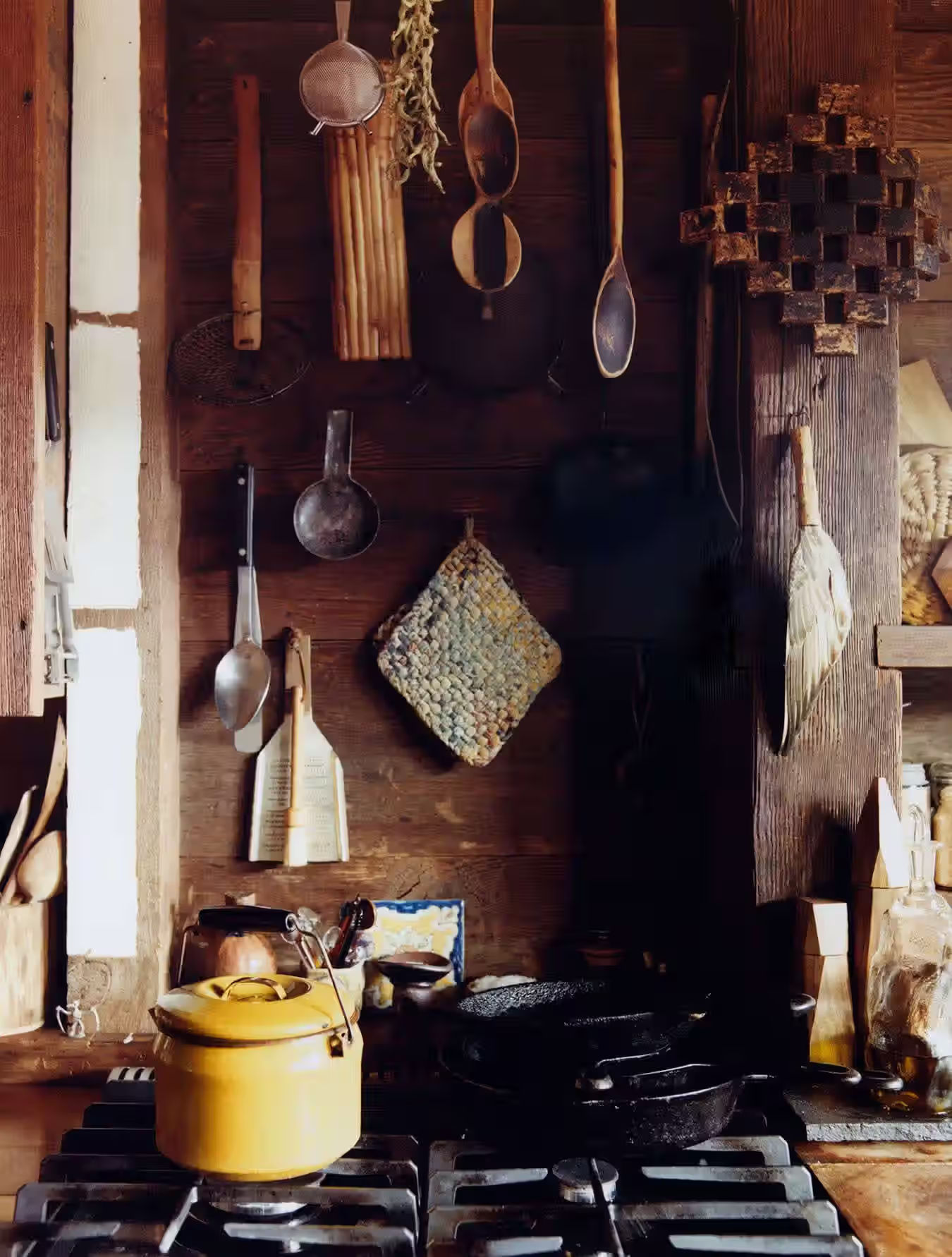
Mariah Nielson with curtains made by her using fabric her father brought back from Indonesia.
His name was JB Blunk, and, until fairly recently, he was one of the great unknown stories of American art. Born in Ottawa, Kansas in 1926, Blunk had an unusual combination of personality traits. He was an eminently practical man, capable of turning his hand to seemingly any craft, but also a remarkably free spirit, most comfortable when completely off the grid. He might have had a conventional life, had he not been drafted into the Korean War. After demobilization, he found himself in Japan. A combination of gut instinct and blissful innocence encouraged him to do something unthinkable: He presented himself to one of the country’s most revered potters, Kaneshige Toyo, and asked to be taken on as an apprentice. Amazingly, the answer was yes. For two years, Blunk lived and worked with Kaneshige, absorbing lessons about not only craft technique, but also the holistic Japanese view of aesthetics—in which a painting, a vase of flowers, a stone, and a bowl all inhabit a single realm of beauty.
By the late 1950s, Blunk found himself back in America. He found a breathtaking piece of land in Inverness, California, 40-something miles north of San Francisco—a wild, magical ride up into deep forest—and set about carving out a life there, anticipating the back-to-the-land movement that would flourish a decade later. Even as Rauschenberg was making his celebrated assemblages, Blunk was assembling a masterwork of his own, a hand-built house with an adjoining studio. Lovingly collaged from found timber and stone, it incorporates details from traditional Japanese architecture yet wholly reflects the artist’s individual vision. So, too, was the self-sufficient life he built there. As he wrote in the 1977 book Craftsman Lifestyle, “I consider this whole place—house, studio, fruit trees, vegetable garden, and chickens—one big sculpture.”
Blunk kept making pottery, both for his own use and to sell, and began creating much larger works in wood and stone. He often carved redwood root structures that he pulled out of the forest floor, remnants of the tragic logging of this natural paradise early in the 20th century. These works somewhat recall those of his friend and major inspiration, Isamu Noguchi. They are typically monolithic, with deft touches applied with chainsaws and other tools, just enough texture to bring the inherent qualities of the natural material into relief. The best-known example, The Planet, 1969, is permanently installed at the Oakland Museum of California, at the junction where the art galleries transition into those devoted to natural history. It’s the perfect spot, given how Blunk’s conception of life—and his art’s involvement in his worldview—transcended a narrowly human perspective.
A final, vital part of Blunk’s world was family. He married twice and had three children: Bruno Blunk, 65, who became a painter; Rufus Blunk, 63, a sculptor; and Mariah
Nielson
, 45. An indefatigable steward of her father’s legacy, the latter has ensured the preservation of the house, and, for a time, hosted the world’s most enviable artist residency there. Nielson has also published a beautiful book about her father, helped to organize exhibitions of his work, and recently opened a gallery in nearby Point Reyes Station, simply called Blunk Space.
Those unfamiliar with northern Marin County might be inclined to doubt the wisdom of this latest undertaking. In the ’60s, the region was an epicenter for the counter cultural back-to-the-land movement, and it still feels quite remote: a great place to camp and hike. But to buy and sell art? As it turns out, the area has been attracting residents and cultural energy, a process accelerated by the Covid pandemic (and sky-high real estate costs in the Bay Area). Plenty of artists, poets, and musicians were living there already. Now they make for an eager audience to this latest chapter in Blunk’s legacy.
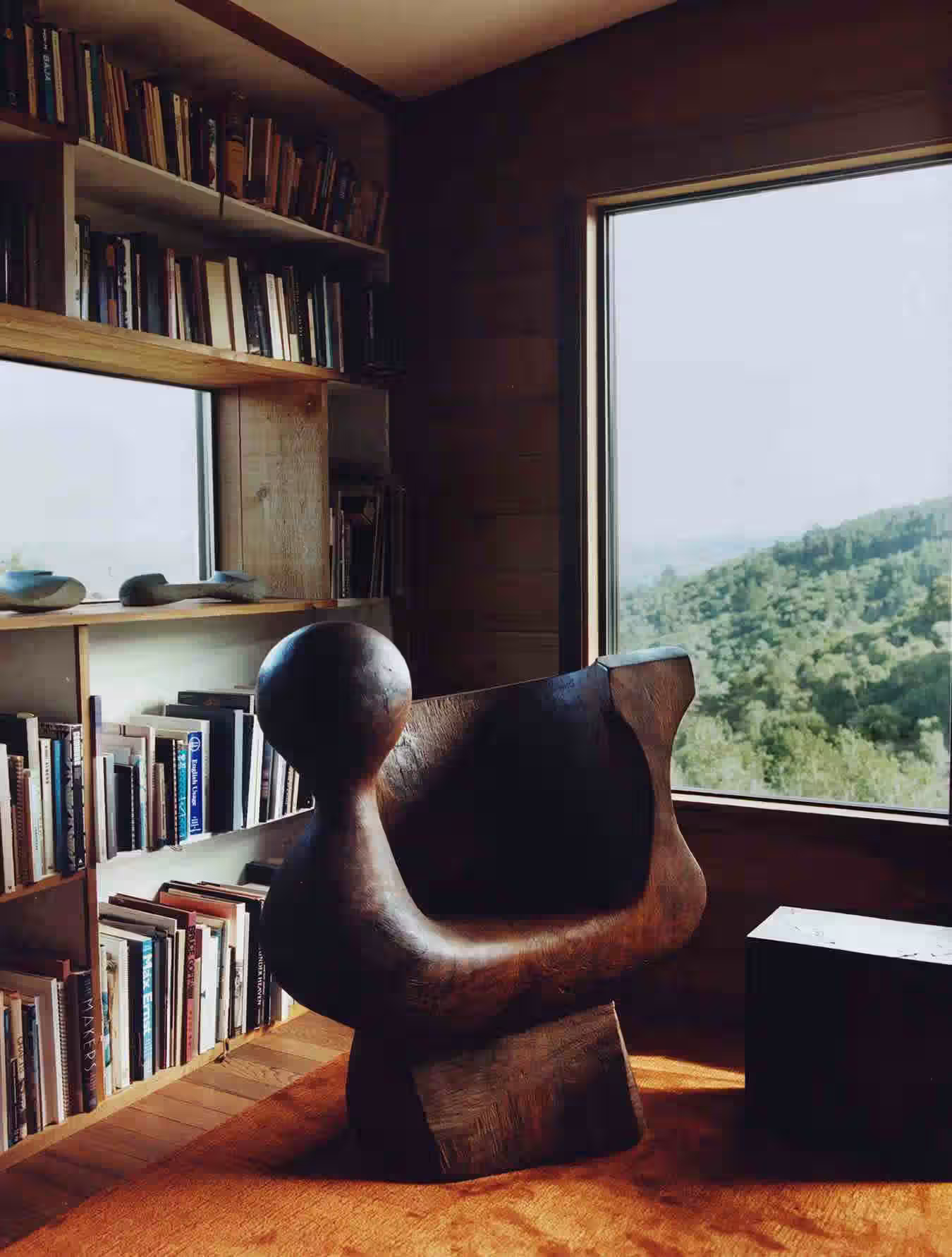
Mariah’s Chair in the bedroom of the Blunk House. Blunk carved this work from a single piece of salvaged old-growth redwood in 1978, the year Nielson was born
In programming the new gallery, Nielson is mindful of her own childhood. She recalls how Blunk would continually rotate art in the house, both his own work and gifts from his artistic allies such as Noguchi. She likens the effect to that of a tokonoma, the niche in some Japanese homes (including Kaneshige’s) dedicated to seasonally appropriate artworks. Blunk Space has this same ever-fresh energy. A terrific show called “100 Hooks” recently echoed a project that her father organized in 1981 for which he made 100 plates, some functional, some not so much. “I thought it would be more exciting to invite a hundred different artists and designers to all respond to the same simple brief,” Nielson explains.
“Make one hook, any size, using any material.” The resulting exhibition is a testament to the ever-unpredictable nature of human creativity.
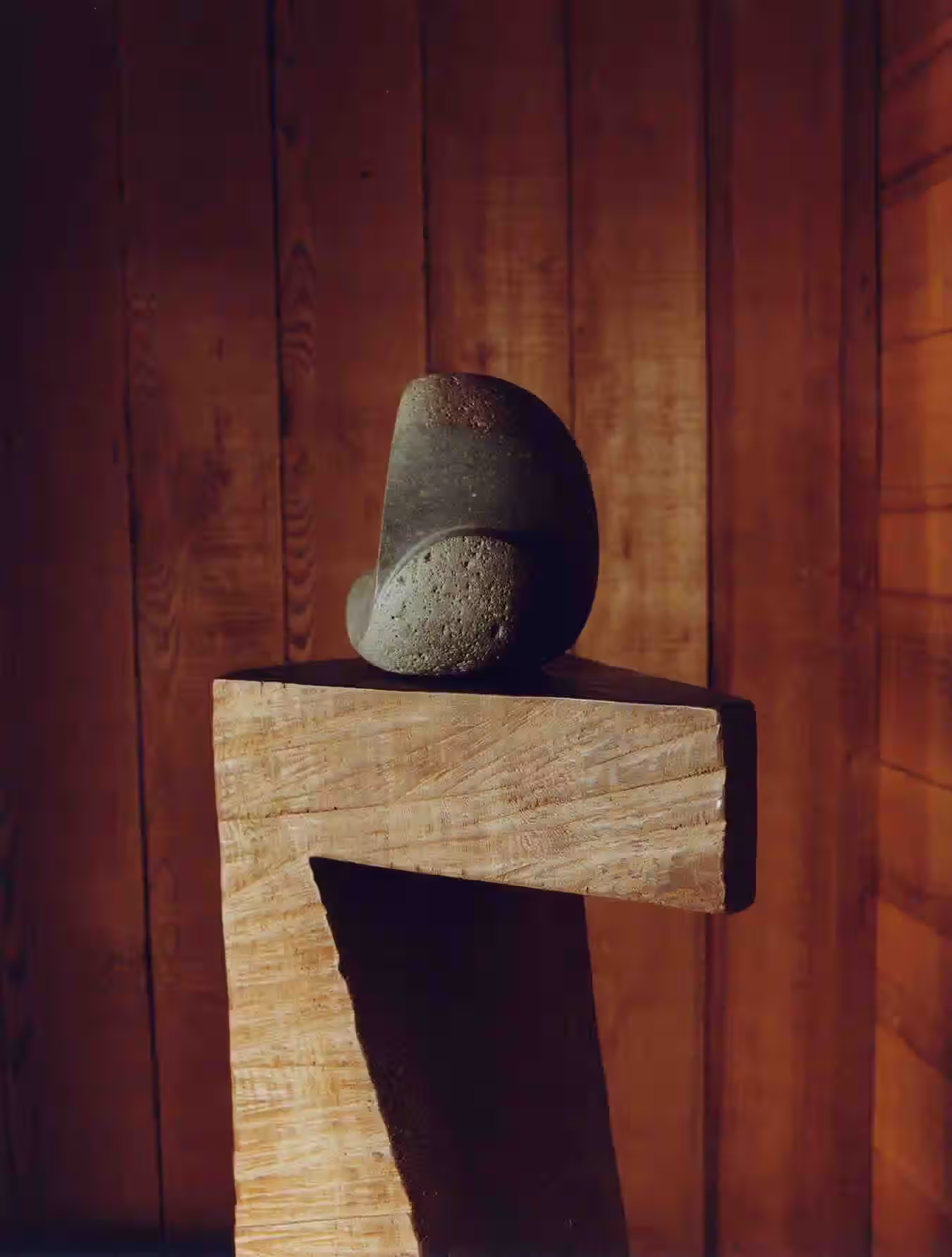
Detail of Blunk’s sculpture Head made in 1994 using river stone and salvagedredwood.
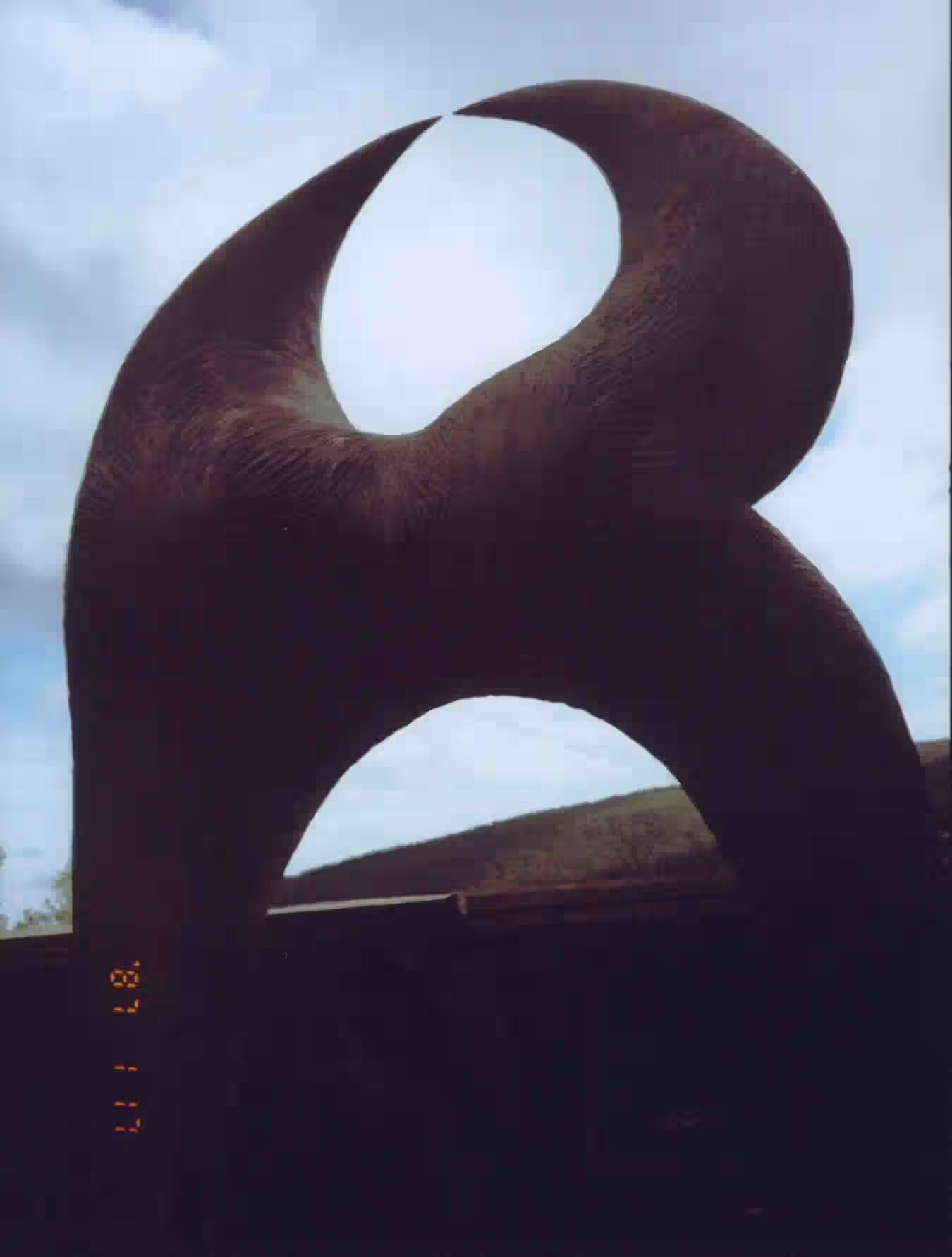
Detail of Bruno, Blunk’s cast bronze sculpture made in 2002.
This spring an exhibition revived yet another Blunk tradition: the family show. Held annually at the family house in the spring from 1982 to 1986, the occurrence displayed work from both parents and children. (Little Mariah often debuted drawings, selling them for a quarter apiece.) The group show at Blunk Space this year, similarly, featured work by artist-couple Jay Nelson and Rachel Kaye, and their daughters 6-year-old Zinnia, and 9-year-old Romy.
Like everything Blunk-related, the ongoing project embodies an alternative set of values that once encountered, seem like the most natural thing in the world. Nelson and Kaye, who first completed a residency at the Blunk Space in 2010, say they had the sense of being let in on a secret. For all the monumentality and impressive craft, there is something very intimate about Blunk’s work. Now, thanks to his daughter, the secret is out. There never had to be a gap between art and life, or craft and sculpture, or materiality and spirit. View them in the right light, and you’ll see: They’re one big, happy family.





_result_result.avif)

%252520(1)_result_result.avif)
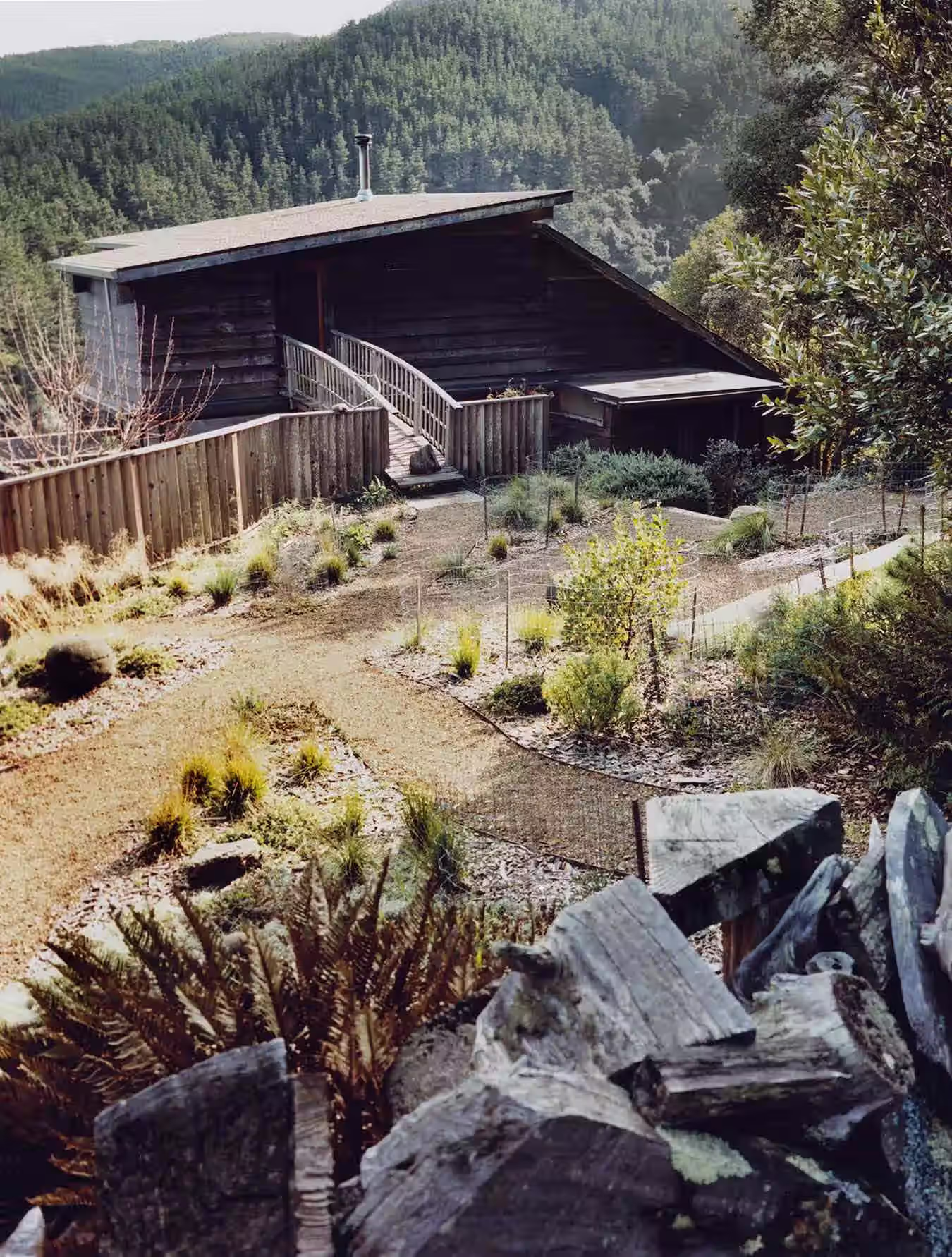
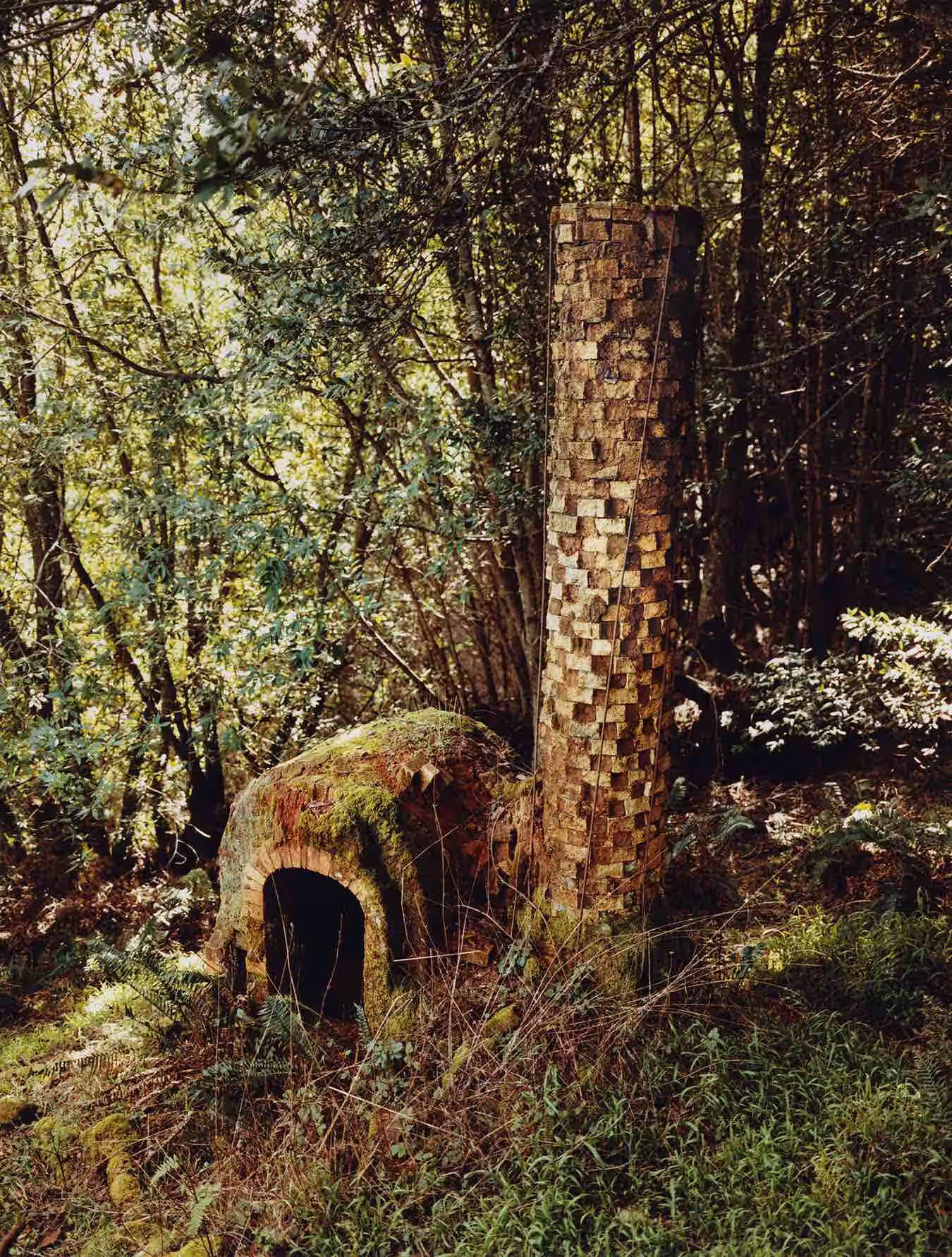
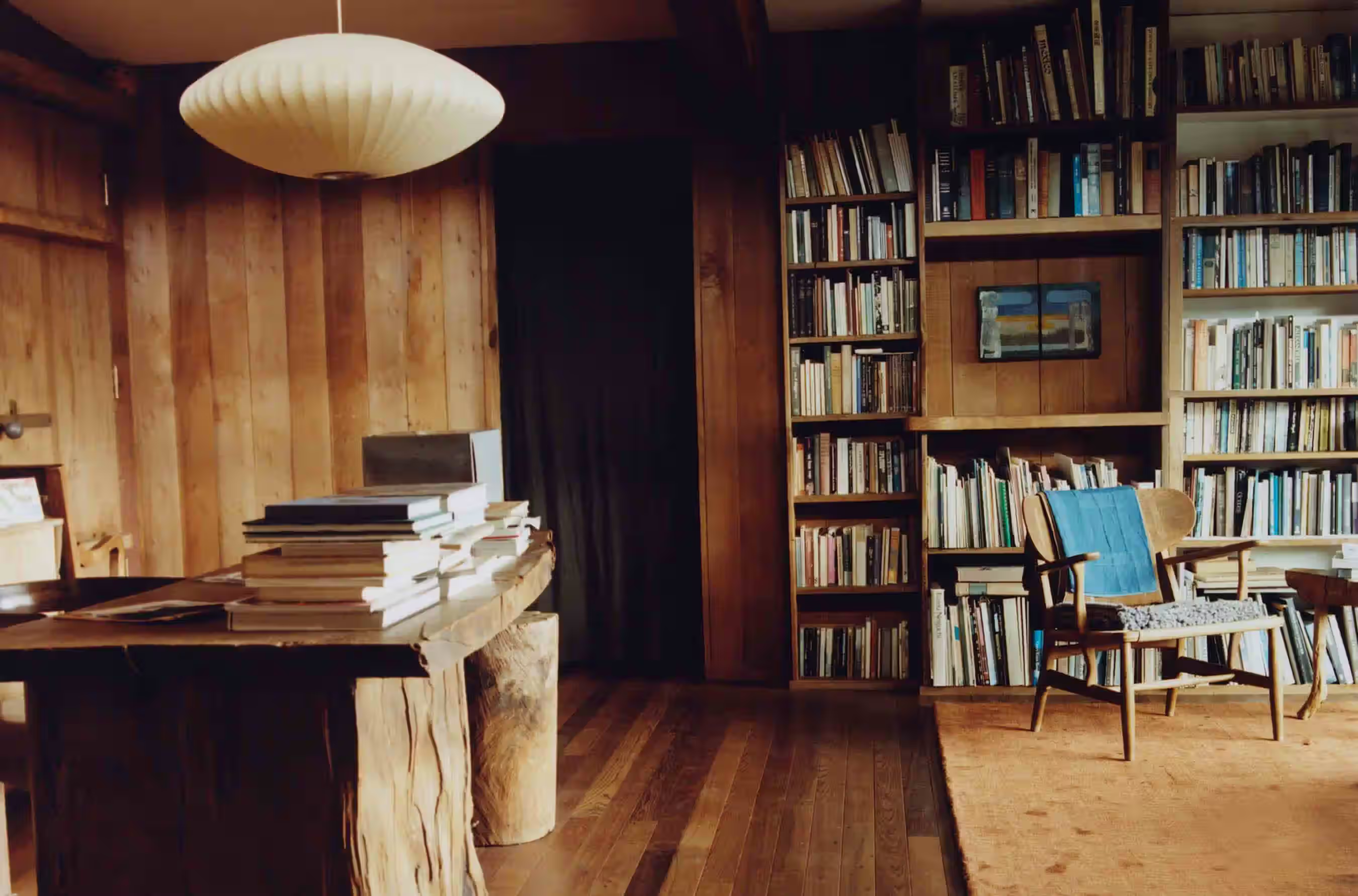




%252520(1)_result_result.avif)
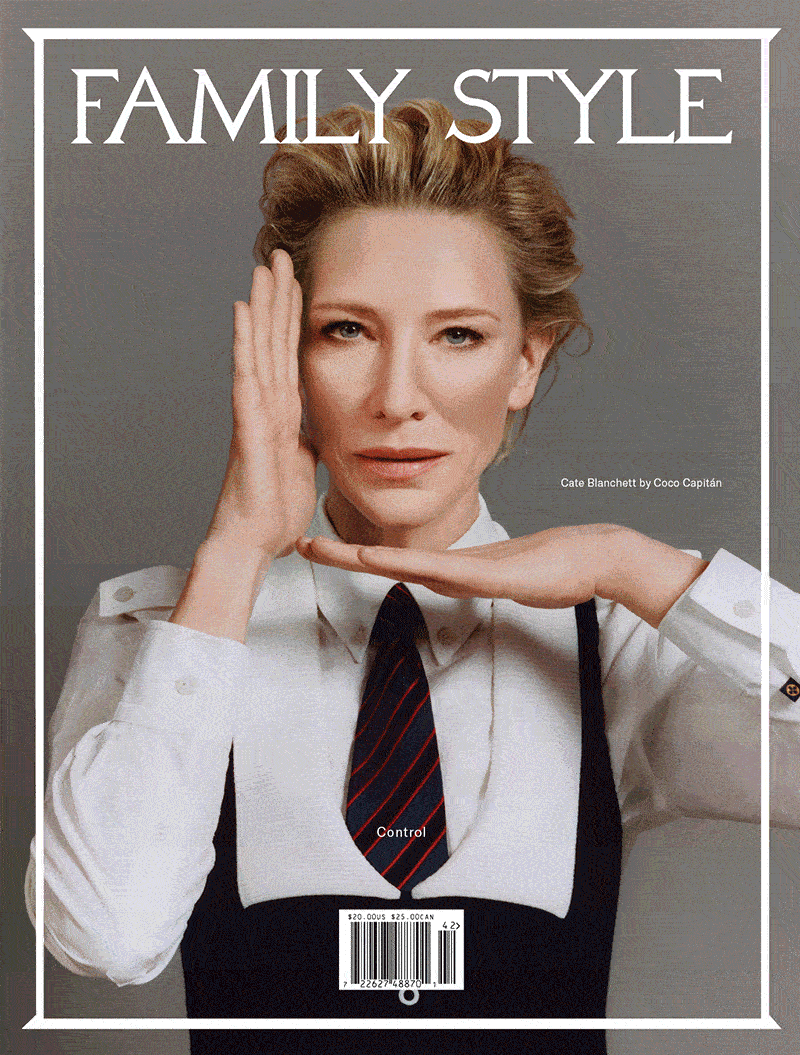


.avif)

